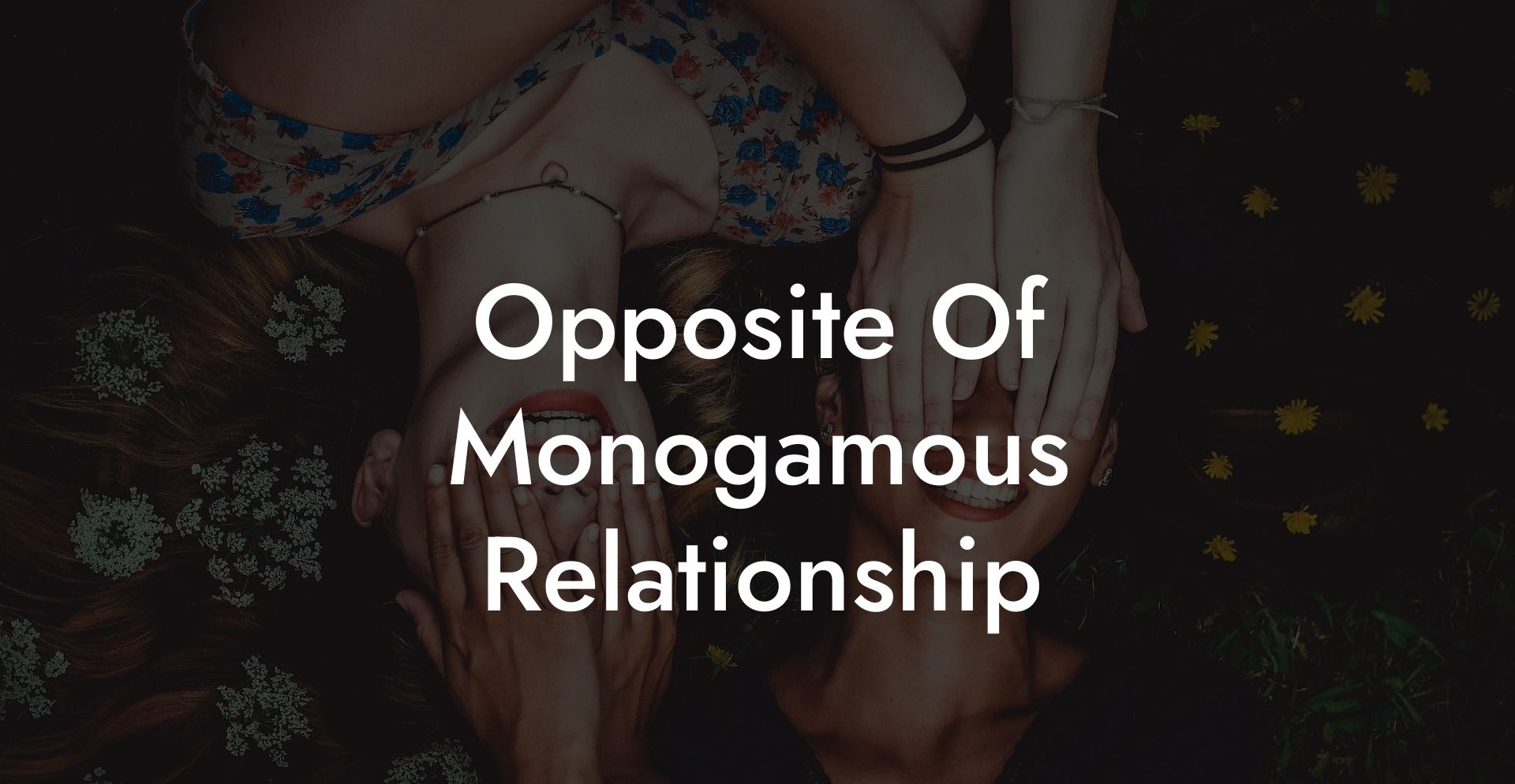In today's modern world, many people are exploring different types of relationships outside the confines of monogamy. With the growing acceptance of diverse relationship styles, it's a good idea to gain insight into what the opposite of a monogamous relationship looks like. In this article, we will dive into the world of non-monogamous relationships, discussing their various forms, benefits, and challenges.
Opposite Of Monogamous Relationship Table of Contents
Polyamory: Building Connections and Love
Swinging: Exploring Sexual Experiences
Open Relationships: A Balance Between Monogamy and Polyamory
Defining Non-Monogamy
Non-monogamy, as the name suggests, is any type of relationship that involves more than two people being involved sexually or romantically. Non-monogamous relationships can take on many different forms, including but not limited to:
- Polyamory
- Swinging
- Open Relationships
Polyamory: Building Connections and Love
Polyamory, meaning "many loves," refers to romantic relationships that involve multiple partners with the consent and knowledge of everyone involved. It's important to note that polyamory focuses on developing deep emotional connections and lasting love between partners, rather than solely seeking sexual experiences.
The Different Types of Polyamory
- Hierarchical polyamory: In this type of polyamorous relationship, there is a primary partnership with secondary and tertiary relationships outside of that. The primary relationship often takes precedence in terms of time, emotional investment, and decision-making.
- Non-hierarchical polyamory: This form of polyamory does not have a primary relationship; all relationships are considered equal with no hierarchy among them.
- Solo polyamory: This term refers to individuals who maintain their autonomy while still participating in multiple romantic relationships.
Swinging: Exploring Sexual Experiences
Swinging, also known as "the lifestyle," involves committed couples who choose to engage in sexual experiences with others. Swingers often participate in group sex, partner swaps, or attend organized events specifically catered to those interested in exploring their sexuality with others.
Open Relationships: A Balance Between Monogamy and Polyamory
Open relationships fall somewhere between monogamy and polyamory. They allow couples to maintain a primary partnership while allowing for sexual experiences outside of that relationship. It's important to note that open relationships typically do not seek emotional connections or romantic relationships with the additional partners.
Opposite Of Monogamous Relationship Example:
John and Jane are in a committed monogamous relationship but have been discussing the idea of exploring an open relationship. They both want to maintain their emotional bond and life commitments to one another but are curious about having other sexual experiences. After having a conversation discussing boundaries and expectations, they decide to experiment with non-monogamy.
They begin attending swinger events to explore their sexuality with others. Over time, they find that they enjoy the thrill of flirting and participating in group sex, while still remaining devoted to each other. Communication remains open and honest as they navigate this new aspect of their relationship.
It's important to remember that the opposite of a monogamous relationship isn't just one specific type of relationship. There are various non-monogamous relationship styles that cater to different needs, desires, and boundaries. Each form of non-monogamy offers unique benefits and challenges, and successful participation hinges on open communication, trust, and respect.
We encourage you to explore other guides on The Monogamy Experiment and share this post with others interested in understanding the diverse relationship options available. It's a rewarding journey of self-discovery and growth, both as individuals and in your relationships.













